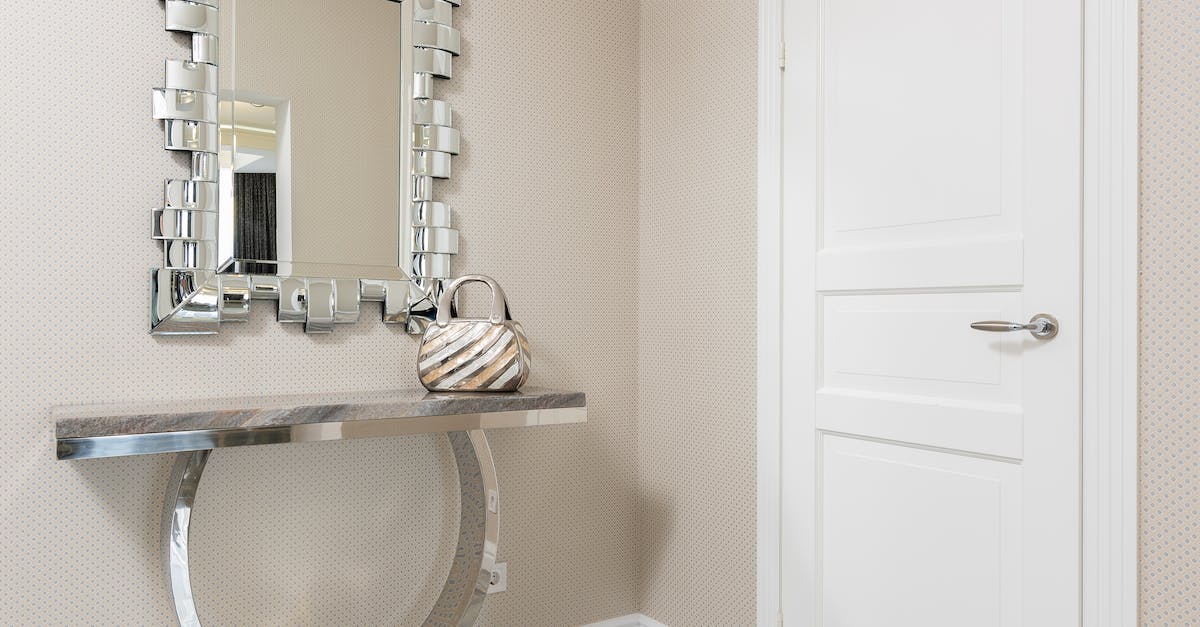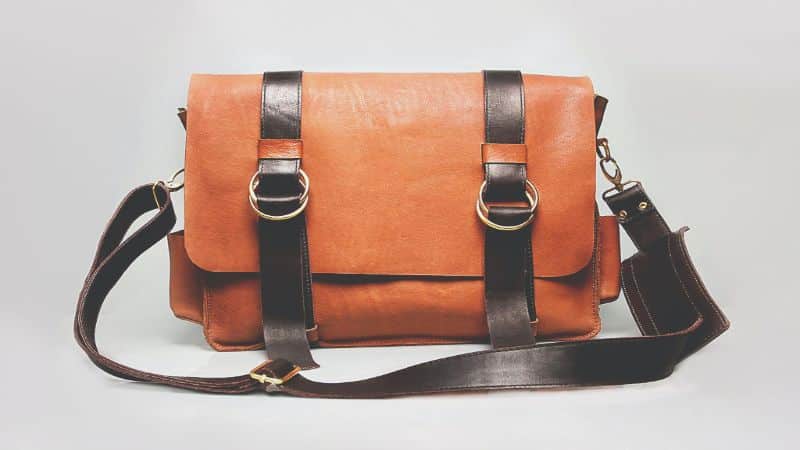Discovering mold on your favorite handbag can be a real downer. But don’t worry, you’re not alone in this struggle! Whether it’s a cherished leather satchel or a trendy fabric tote, mold doesn’t discriminate.
Recognizing the Signs of Mold on Handbags
You’ve noticed something’s off with your favorite handbag – a peculiar smell, perhaps? That’s your first hint mold may have made itself at home. Mold on handbags isn’t always blatant, but your senses are the best tools for the initial detection.
Look for any unusual spots or discolorations. Mold manifests as splotches which can range from white and green to black. The variety of colors can throw you off, so keep an eye out for any growth or change in pattern.
Smell your bag. Mold has a distinctive, musty odor; it’s nature’s way of signaling that something’s amiss. If you’re getting a whiff of something akin to damp basement or wet socks, trust your nose – there’s a high chance mold is present.
Feel the texture of your handbag. Mold doesn’t just sit on the surface; it can also embed itself into the fibers, causing the material to feel different. If parts of your bag feel unusually rough or slimy, it’s time to examine closer.
Here are some surefire signs that you’ve got a mold situation:
- Visible spots or patches
- A strong, musty odor
- Textural changes in the material
- Stiffness in previously supple leather
If your handbag is exhibiting any of these symptoms, it’s vital to address the problem swiftly to prevent further damage to your beloved accessory. Remember, mold can fill the air with spores, which has the potential to spread and contaminate other items around it. Keep your handbags in a well-ventilated area and monitor their condition regularly. With diligence, you can catch mold early and save your handbag from a grim fate.
Got mold? Don’t fret just yet. Next up, we dive into the cleaning techniques that can help get your handbag back to its former glory.
Preparing your Handbag for Cleaning
Before tackling the mold on your handbag, proper preparation is crucial to prevent damage and ensure effective cleaning. Begin by emptying your handbag. Shake out any debris and make sure to check all pockets and compartments. Just one forgotten piece of paper or a stray pen can cause issues during the cleaning process.
Next, assess the materials of your handbag. Leather and fabric require different approaches. For leather, you’ll want to perform spot tests with cleaners to ensure there’s no discoloration. With fabric, be mindful of the potential for water stains. Dust off the exterior with a soft brush to remove loose mold spores.
If your handbag has any metallic accessories such as buckles or zippers, wipe them down with a dry cloth. Metal may need to be polished after cleaning, but it’s essential to remove any present mold from these parts too.
Consider your working area. Choose a well-ventilated space, preferably outdoors. If that’s not an option, open windows to prevent mold spores from lingering inside your home.
You’ll need the following tools and materials:
- A soft brush
- Mild, non-detergent soap or a cleaner specifically designed for your handbag’s material
- Clean cloths, preferably microfiber
- A small bowl of water (for fabric bags)
Transfer these items along with your handbag to your chosen cleaning space. Layout a clean, dry towel where you can set your handbag during the cleaning process. Remember, mold can spread easily, so keep your tools designated for this purpose away from other household items.
Check back for insightful tips and tricks on the actual cleaning steps that will help restore your beloved accessory.
Removing Mold from Leather Handbags
Once you’re set with your tools and materials, it’s time to tackle the mold. Leather, though durable, requires a gentle touch. When dealing with mold on leather handbags, follow these steps for a safe and effective cleaning process.
Start by lightly brushing the leather’s surface to remove any loose spores. Use a soft-bristled brush and ensure you’re doing this outside to avoid spreading the mold indoors. Next, make a cleaning solution by mixing equal parts water and rubbing alcohol or vinegar. Dampen a soft cloth with the mixture and gently wipe the affected areas. Be careful not to soak the leather as excess moisture can lead to more damage.
After wiping down your handbag, let it air-dry naturally in a well-ventilated space but avoid direct sunlight as it can warp or fade the leather. Once dry, consider applying a specialist leather conditioner to restore your handbag’s natural oils and suppleness. This step also helps in preventing future mold growth by ensuring the leather stays moisturized and doesn’t crack.
If the mold infestation is significant, you might need a commercial leather cleaner that’s designed for tackling mold and mildew. Follow the product’s instructions closely and test it on a small, inconspicuous area first to ensure it won’t damage the leather. It’s always wise to keep your leather goods clean and treated with a protective conditioner to fend off further mold attacks.
« How to Wash a Kipling Handbag: Pro Tips for Perfect Results
How Many Handbags Should a Woman Have? Find Your Ideal Number »
Remember, preventing mold is easier than removing it. Regularly clean and condition your leather handbags to maintain their resistance to mold and mildew. Keep them in a dry, ventilated environment, and they should stay pristine for years to come.
Removing Mold from Fabric Handbags
Fabric handbags require a different approach than leather when mold appears. First steps first: brush off as much surface mold as possible. Use a soft-bristled brush outside to prevent mold spores from spreading in your home.
After brushing, make a gentle cleaning solution:
- 1 quart of warm water
- 1 tablespoon of liquid soap
- 1/2 teaspoon of baking soda
Mix these ingredients in a bowl. Test this solution on a small, inconspicuous area to ensure it won’t affect the bag’s color or fabric. If it passes the test, proceed with a soft cloth or sponge. Dab gently at the mold spots; avoid soaking the fabric. You want to lift the mold without drenching your handbag.
Next, rinse the area with a cloth dampened with clean water to remove any soap residue. Then, pat the cleaned spots with a dry towel.
Move on to air-drying. Hang or place your handbag in a well-ventilated space, away from direct sunlight to prevent fading. If you’re dealing with persistent mold or a significant infestation, consider using a fabric-safe mold remover. Always follow the product’s instructions.
Maintain the cleanliness and shape of your fabric handbag by stuffing it with plain paper while it dries. This helps to absorb moisture and keeps your bag from wrinkling or warping.
Preventing Mold Growth on Handbags
After tackling the removal of mold from your treasured handbags, you’ll want to ensure that it doesn’t make an unwelcome return. Prevention is the most effective strategy here, and it’s more straightforward than you might think.
Your first line of defense is regular cleaning. Just a simple wipe-down with a dry cloth can remove dust and moisture that could contribute to mold growth. If your handbag gets wet, dry it immediately and thoroughly.
Proper storage is also crucial. Store your handbags in a cool, dry place away from direct sunlight. Sunlight can dry out leather making it more susceptible to cracking and mold infestation. Use breathable covers like cotton pillowcases instead of plastic bags — plastic traps moisture, which encourages mold.
You should also consider using silica gel packets. Tuck one or two inside your handbag when not in use; they’ll absorb any lurking moisture. Keep your handbags off the floor and on shelves where air circulation is better.
Be mindful of humidity control. If you live in an area with high humidity, a dehumidifier can make a world of difference. Maintaining a consistent indoor humidity level between 30% and 50% is ideal for handbag preservation.
Lastly, don’t forget the importance of rotation. Give each of your handbags its turn in the spotlight. Regular use helps to air out the bags, while long-term storage in one position can create creases and folds that are vulnerable to mold.
These preventive measures won’t just ward off mold; they’ll also extend the life and beauty of your handbags. Stay vigilant, and your handbags will keep looking fabulous for years to come.
Conclusion
You’ve got all the tools you need to tackle handbag mold and keep your cherished accessories in pristine condition. Remember, it’s not just about cleaning but also about preventive care. With the right storage, regular cleaning, and a bit of vigilance, you’ll ensure your handbags remain mold-free and fabulous for years to come. So go ahead and give your bags the TLC they deserve—your handbag collection will thank you for it!
Frequently Asked Questions
How can I prevent mold on my handbags?
Regular cleaning to remove dust and moisture, along with immediate drying if they get wet, helps prevent mold. Store your handbags in a cool, dry place, out of direct sunlight and cover them with breathable materials like cotton pillowcases.
What’s the best way to store handbags to avoid mold?
Store handbags off the floor on shelves to ensure good air circulation. Use silica gel packets to absorb excess moisture and keep the environment dry, especially in high humidity areas. Avoid non-breathable covers, as they can trap moisture.
Can mold on handbags be prevented in high humidity environments?
Yes, use a dehumidifier to maintain low humidity levels. Incorporate silica gel packets inside the handbag for extra moisture absorption. Moreover, ensure your storage area is well ventilated.
Is it harmful to store handbags in plastic covers?
Yes, storing handbags in plastic covers may trap moisture and create an environment conducive to mold growth. It’s better to use breathable materials like cotton pillowcases.
How often should I clean my handbag to prevent mold?
Clean your handbag periodically to remove any dust and moisture. Regular checks will ensure you’re well-informed about the condition of your handbag and can take swift action if there’s any sign of mold.
Will rotating the use of handbags help prevent mold?
Rotating the use of handbags prevents the accumulation of creases and folds where moisture can gather and mold can grow. This habit also allows each handbag to air out, reducing the risk of mold development.











